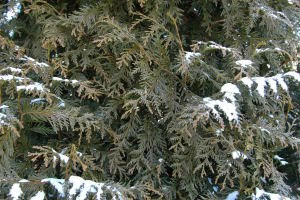 Last night we hosted a CNGA member outreach BBQ at the nursery and if you were there, you might have noticed some interesting upright deciduous shrubs acting as decorations in the potting shed. As a follow up, for those of you who didn't know or generally haven't been familiar, let me introduce you to Fine Line® Buckthorn, Rhamnus frangula 'Ron Williams'.
Last night we hosted a CNGA member outreach BBQ at the nursery and if you were there, you might have noticed some interesting upright deciduous shrubs acting as decorations in the potting shed. As a follow up, for those of you who didn't know or generally haven't been familiar, let me introduce you to Fine Line® Buckthorn, Rhamnus frangula 'Ron Williams'.You may be familiar with the Proven Winners brand and this fine specimen comes from that program. You may have seen them as curious little #3 or #5 plants in pretty white pots and had to imagine what that little guy looks like when he grows up. Well as you can see from the picture, Fine Line® Buckthorn grows into a fantastic upright plant, 8' tall and 3' wide with a "finely" textured foliage that has a tropical appearance but is also dense. The plant is very adaptable, requiring moderate water and drought tolerant once established. It is SUPER hardy as well, zone 2 (-50 F)! Plant in sun or part shade, don't pick the few berries it produces (Rhamnus berries are poisonous) and watch the deer walk on by to forage elsewhere. Although no plant is perfect this one sure passes the sniff test as a tough plant for Colorado.
It has a wide range of uses including narrow hedges or screens, accent specimen, patio planters, and combination planters. It can be used to frame doors and pathways as well. We have 10 5' B&B in stock now and will be stocking more next spring, so come by to see one, try one and start designing them into your projects.








.JPG)